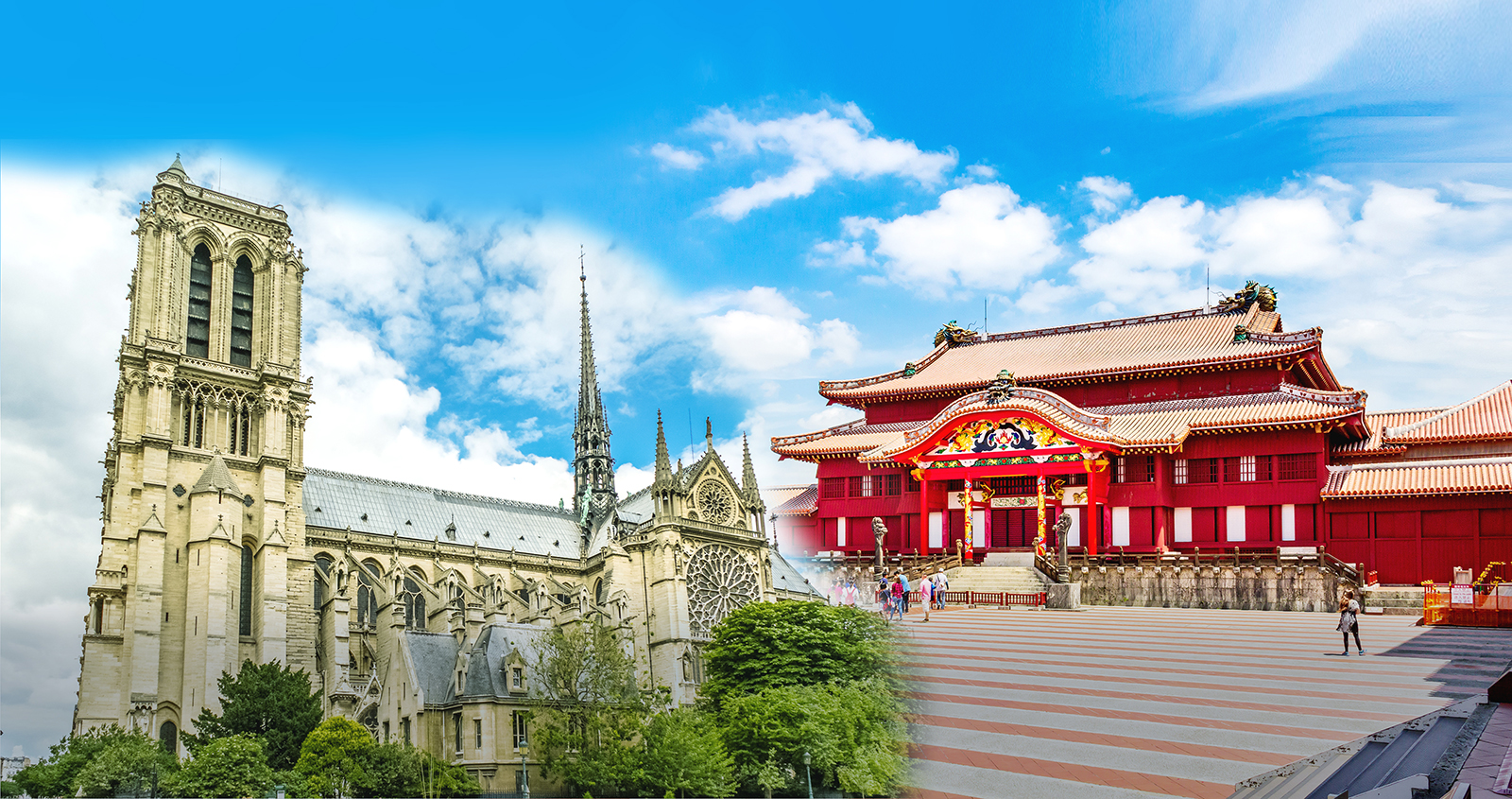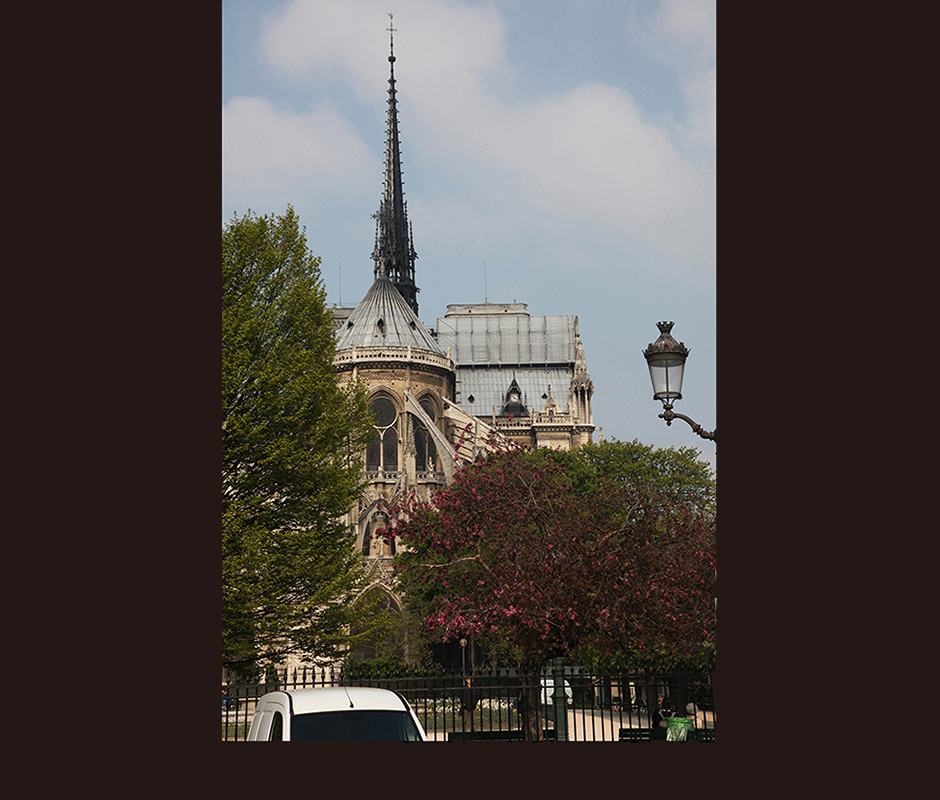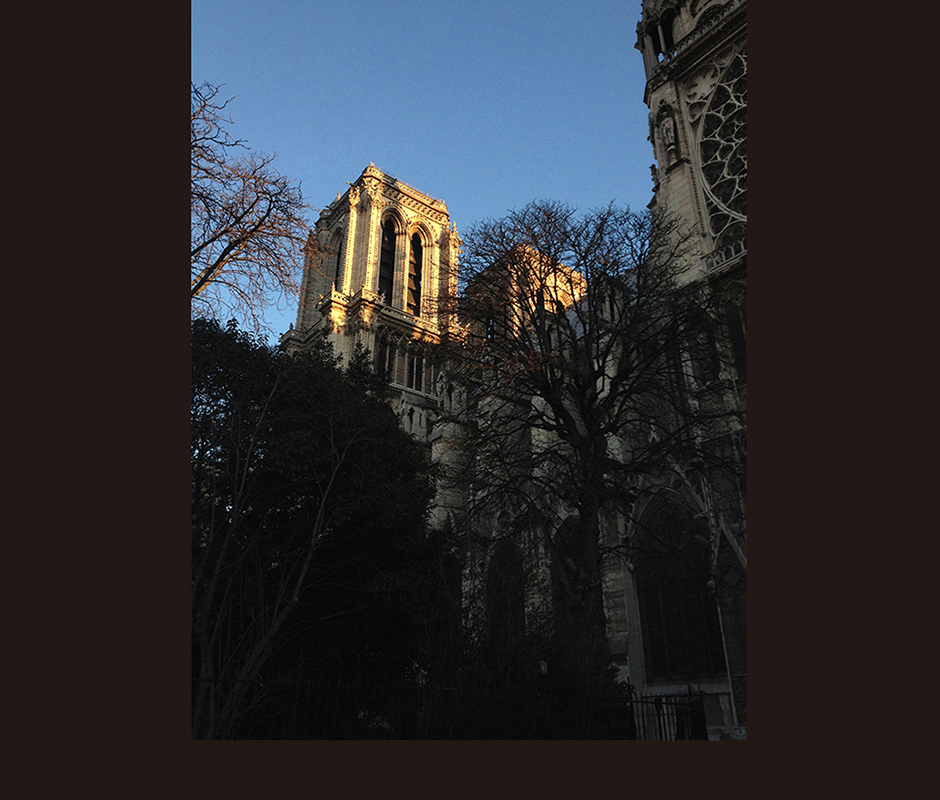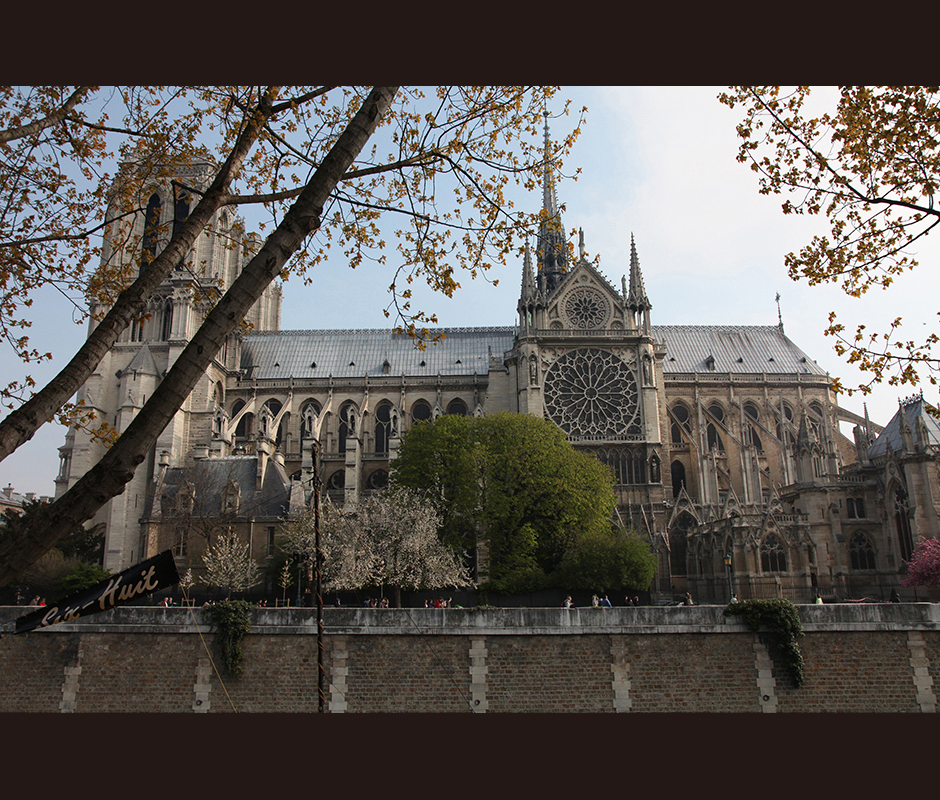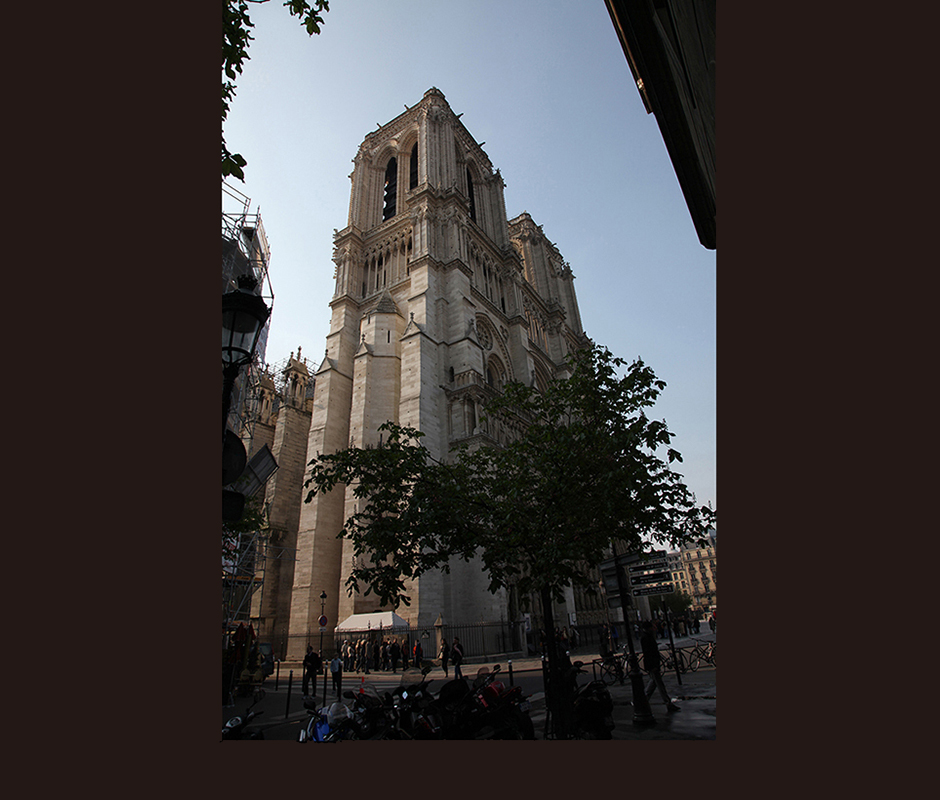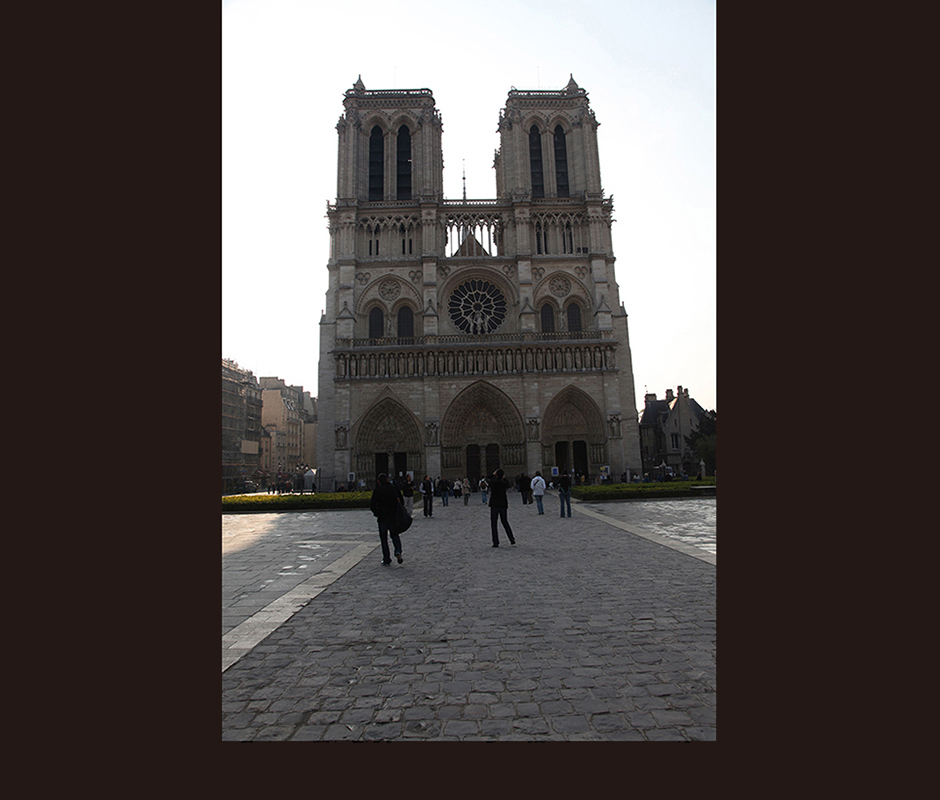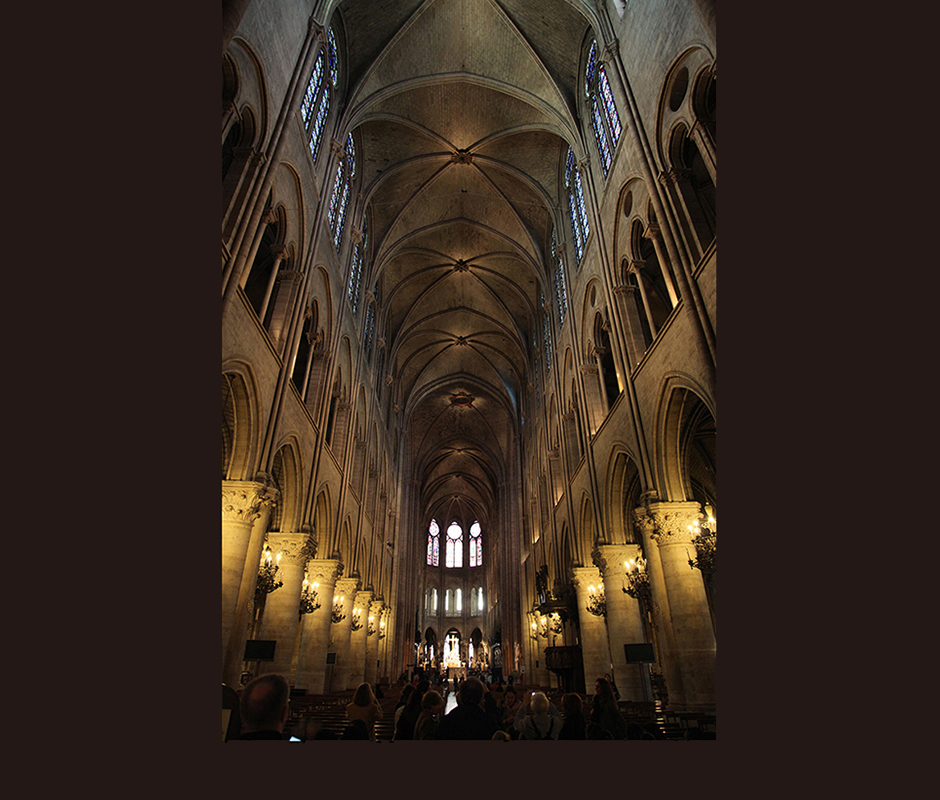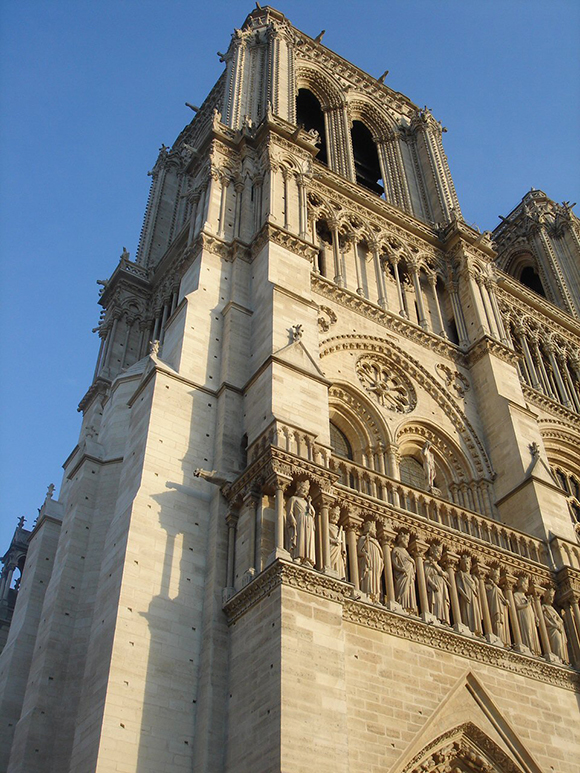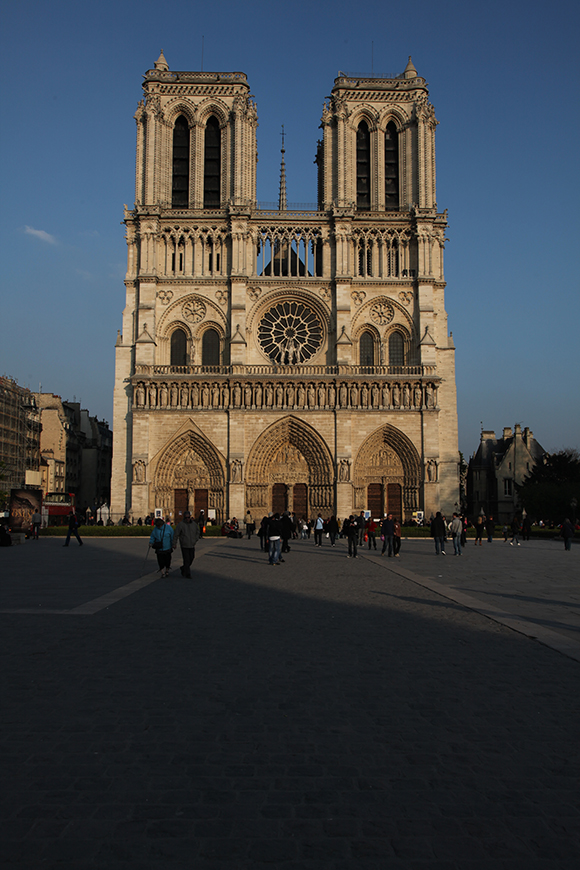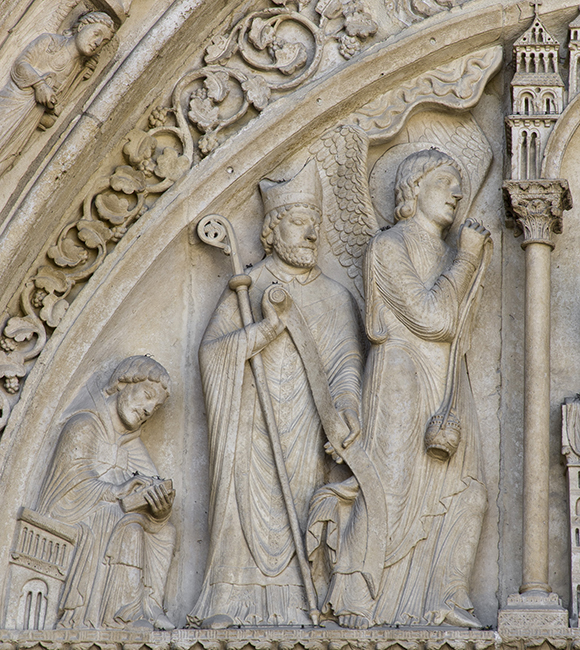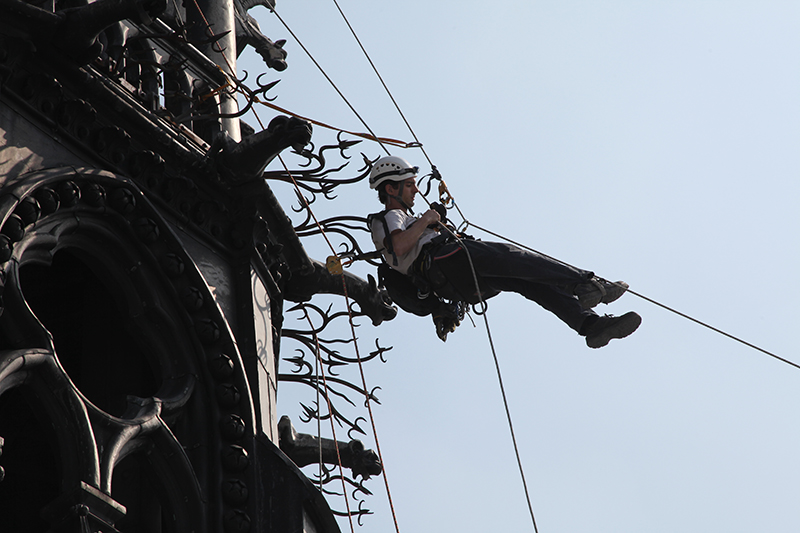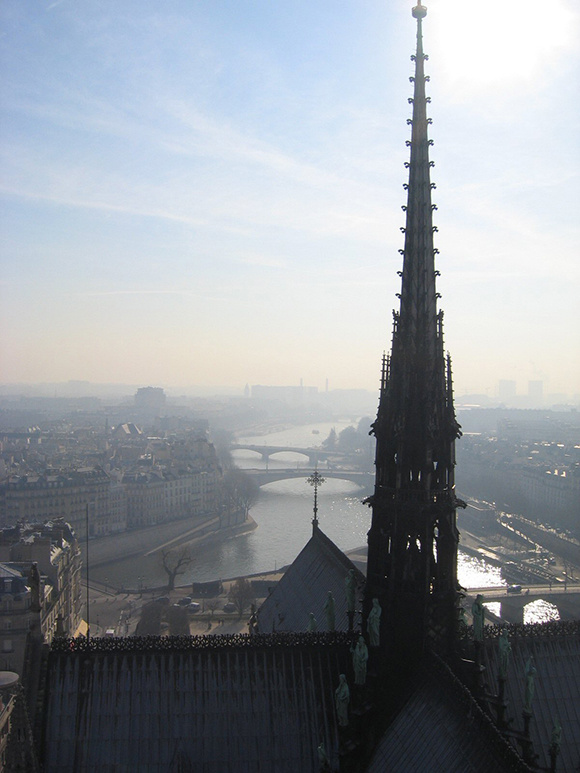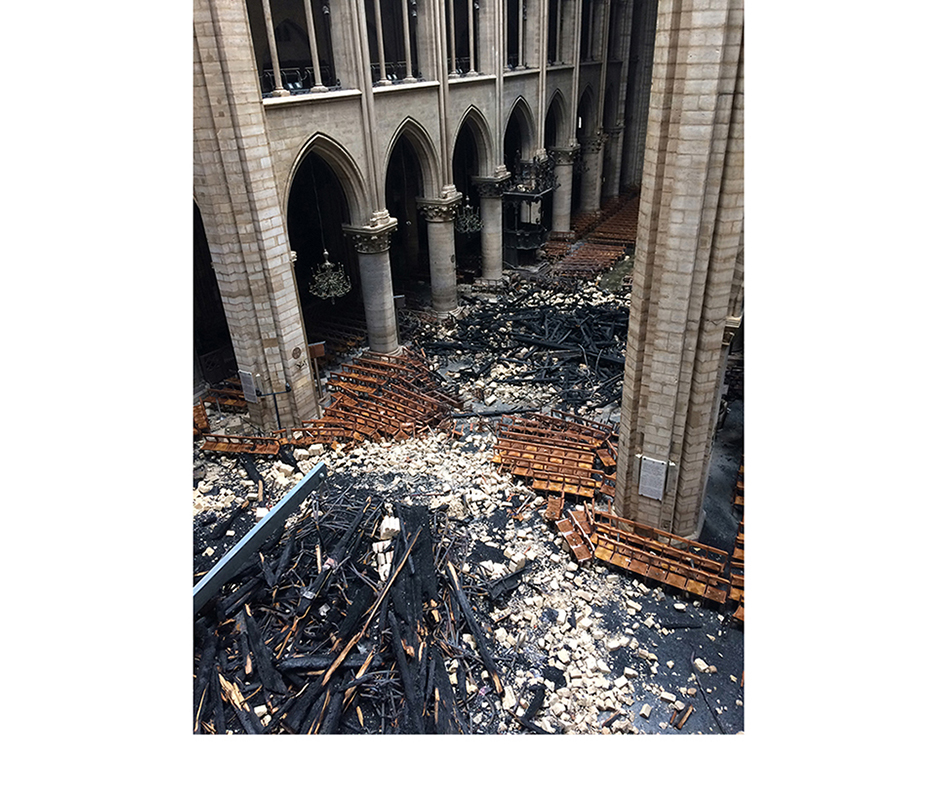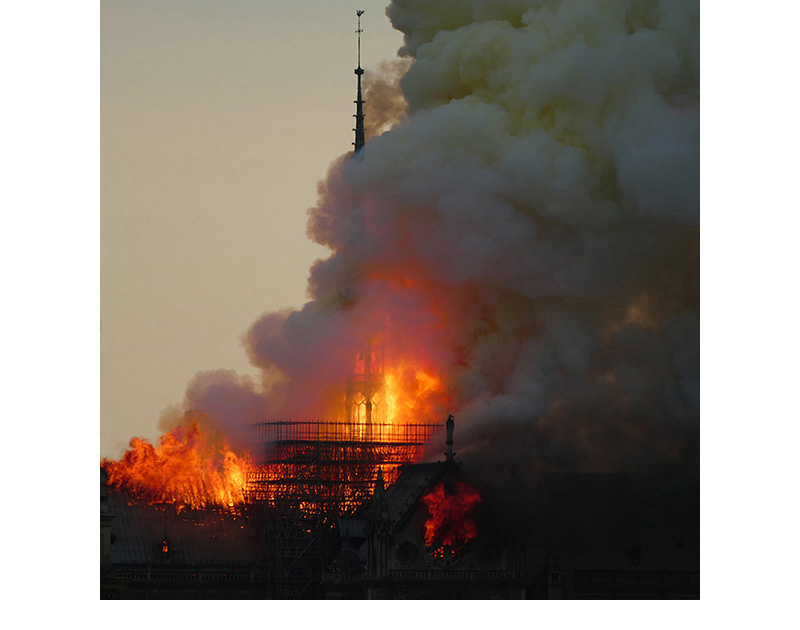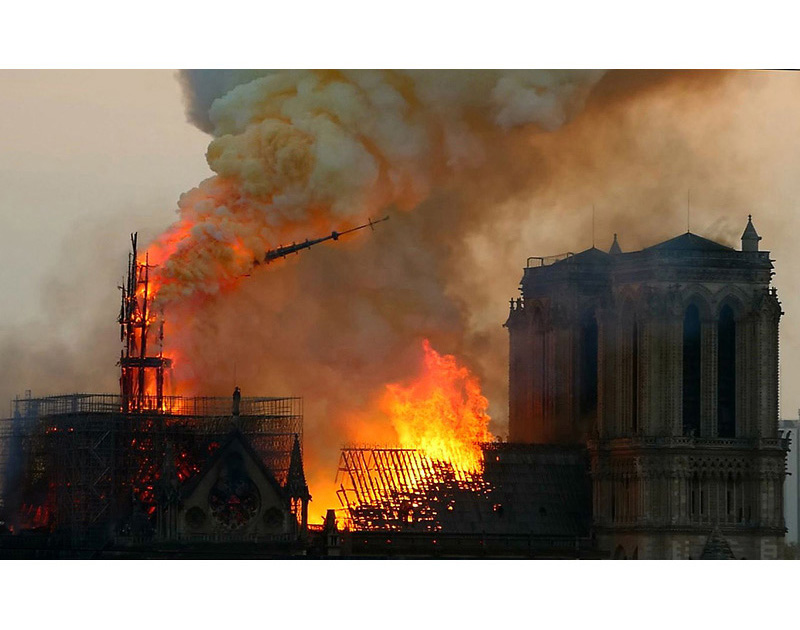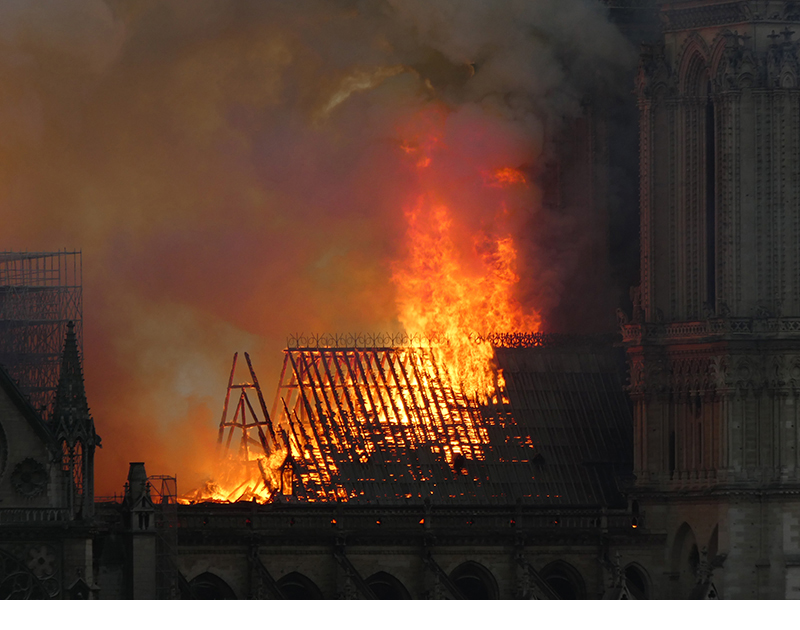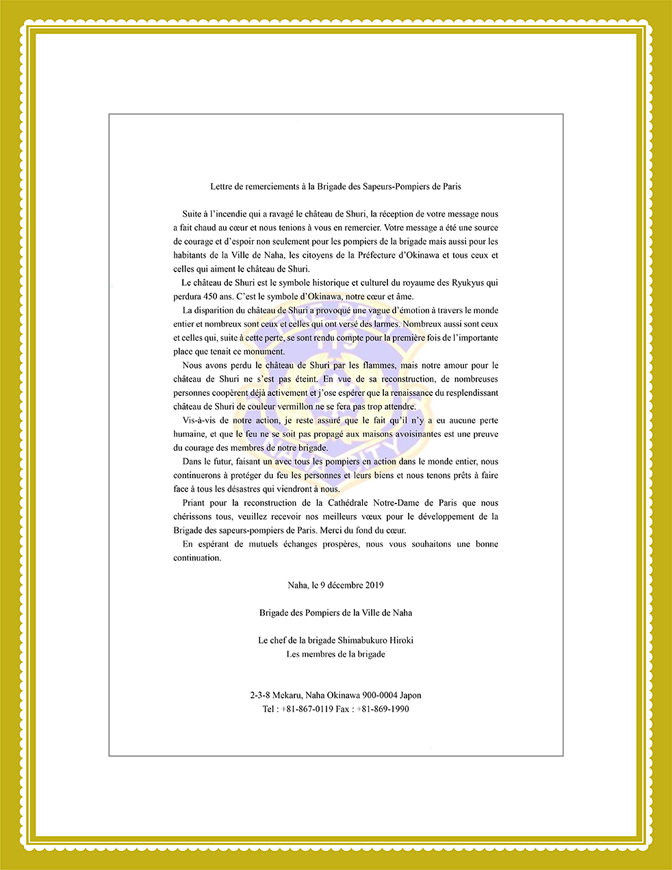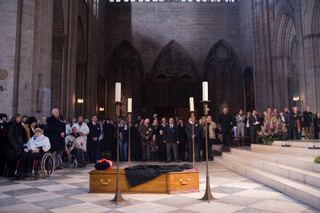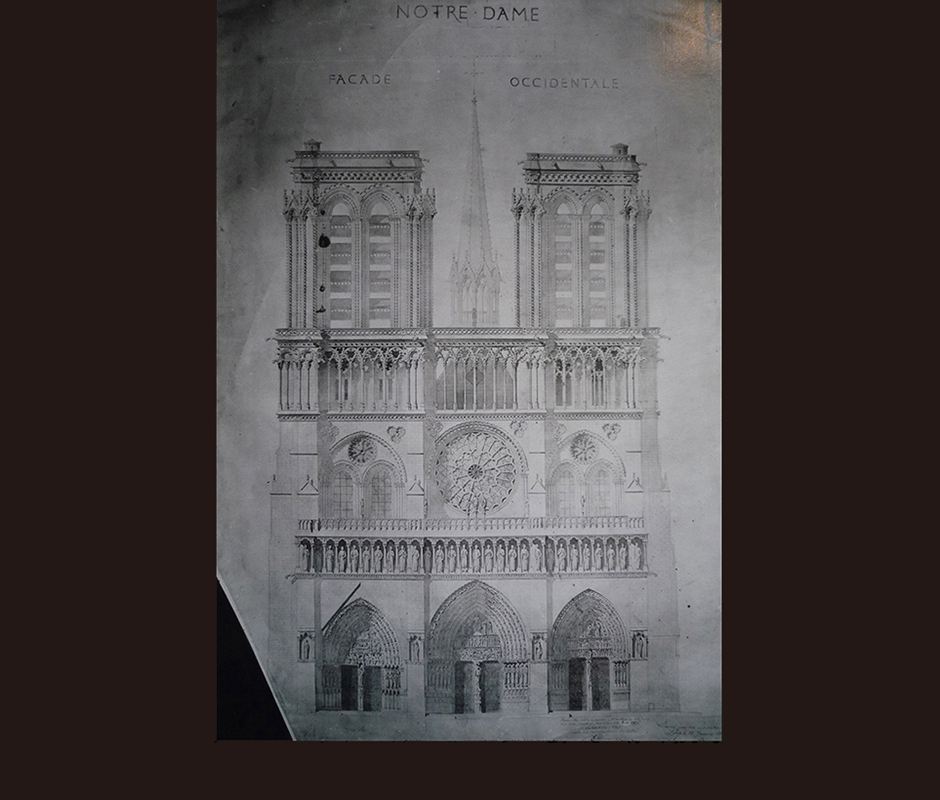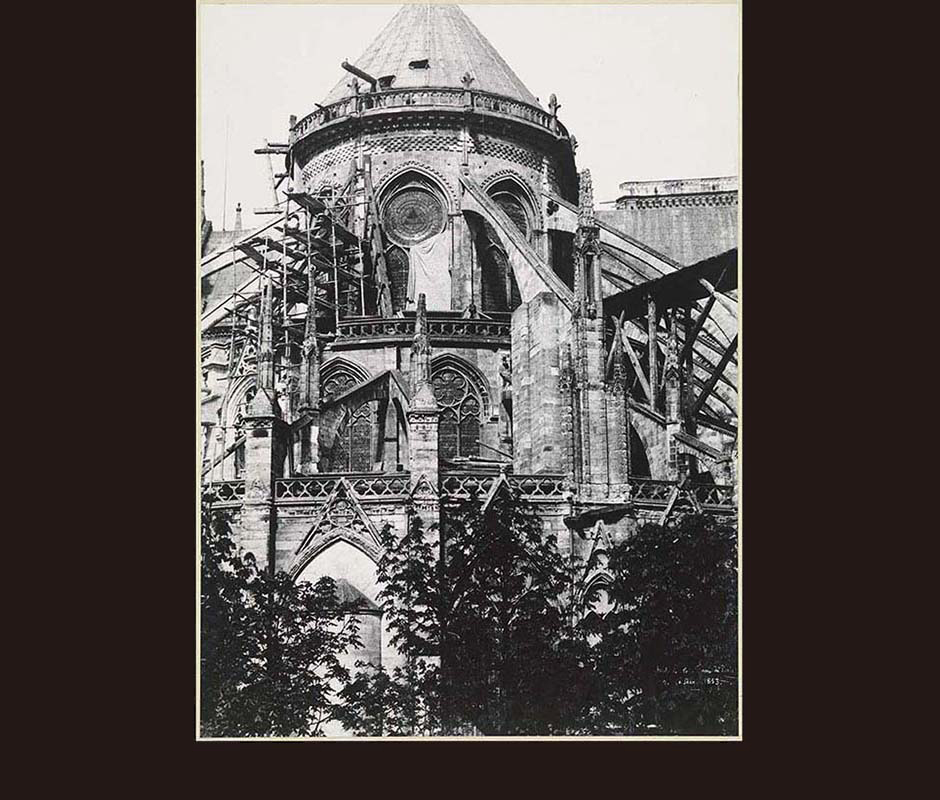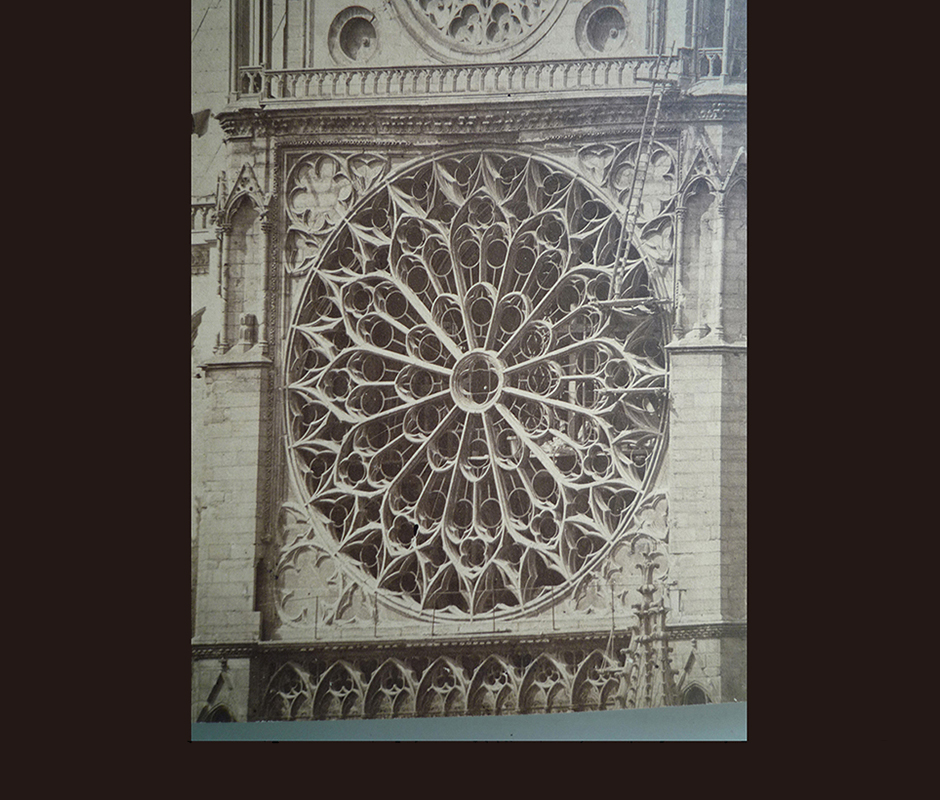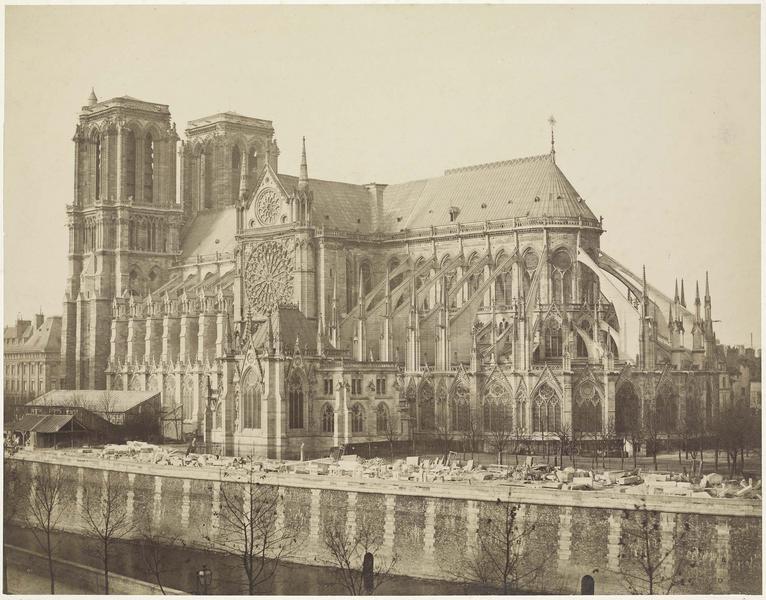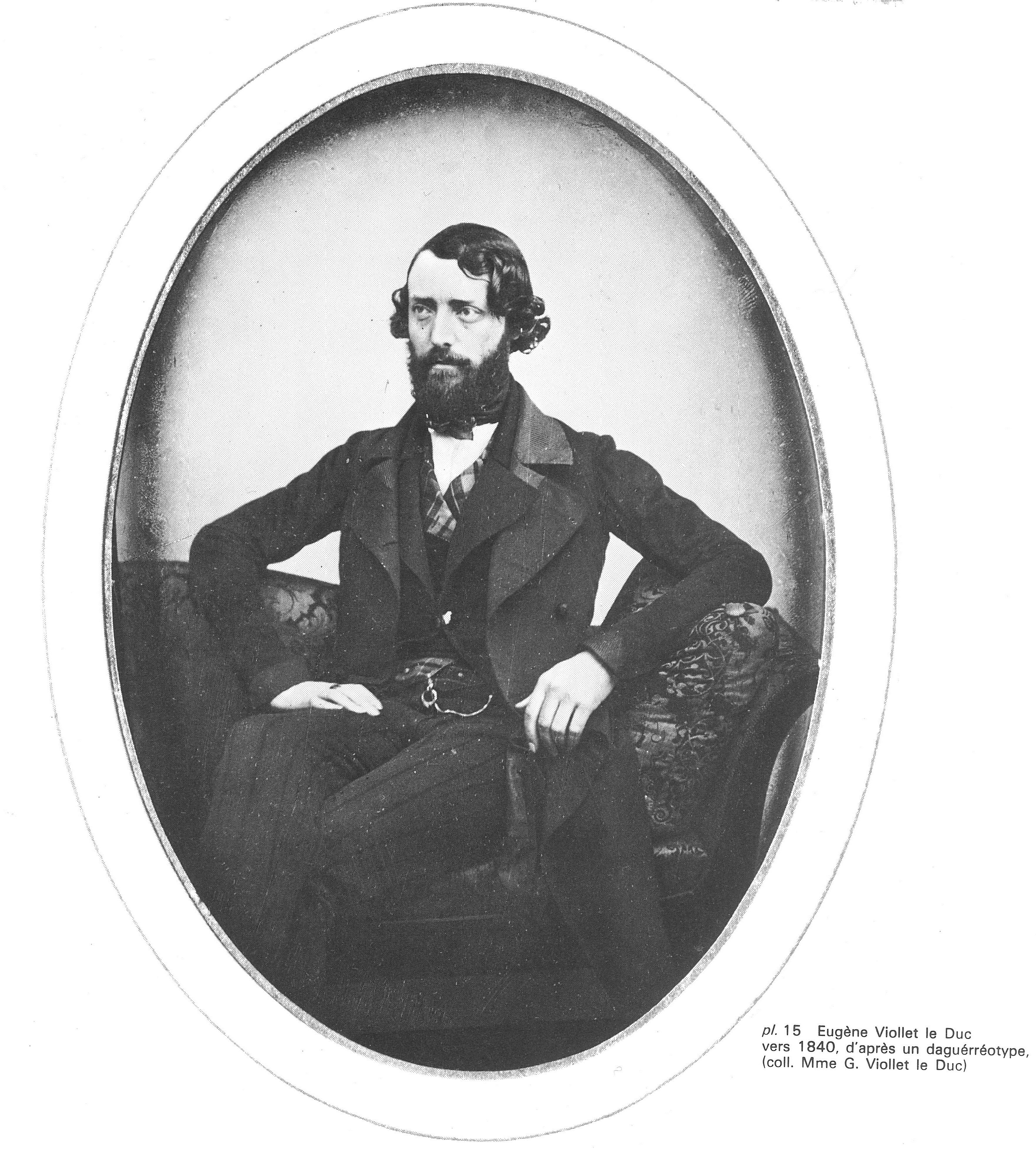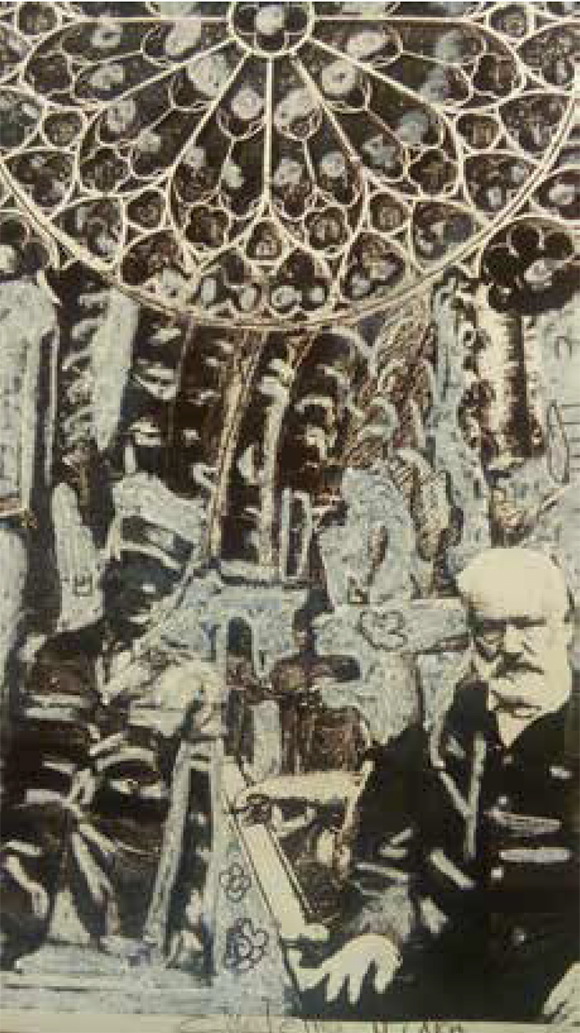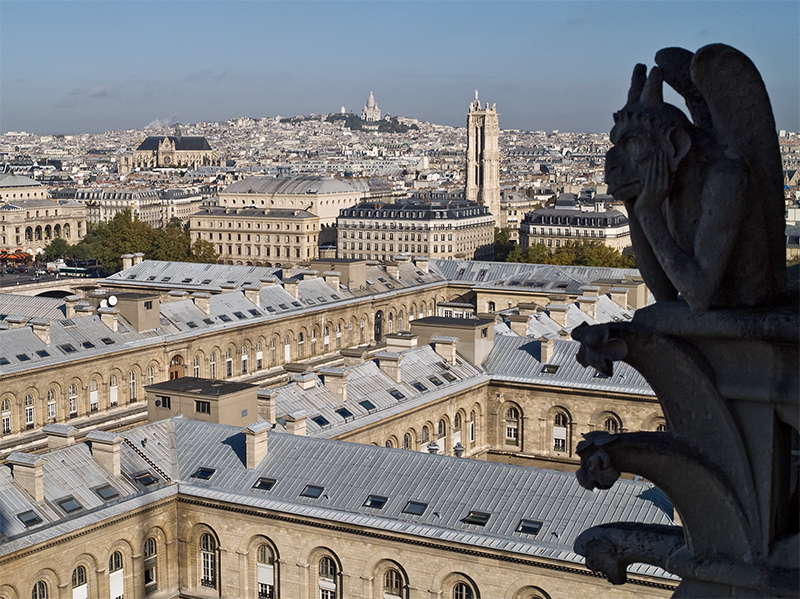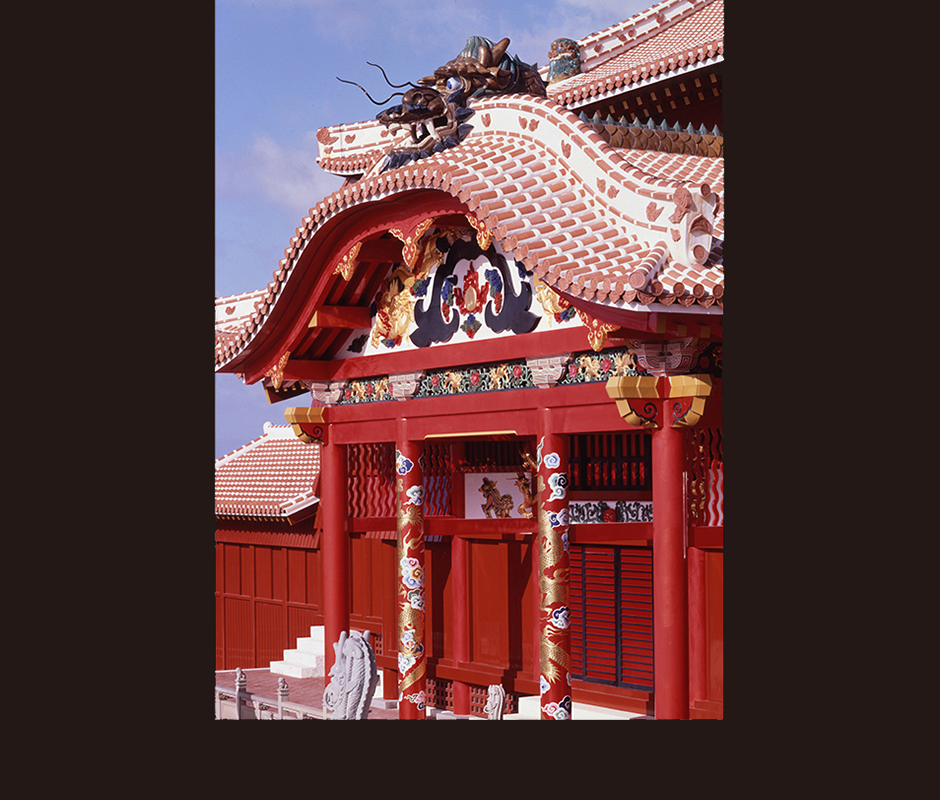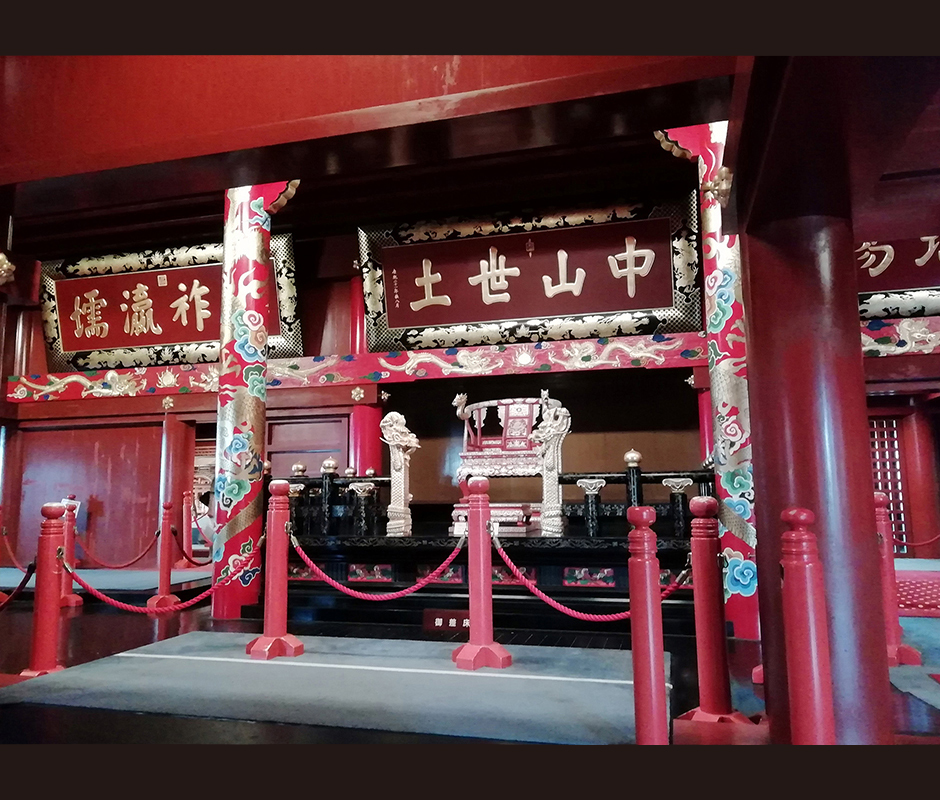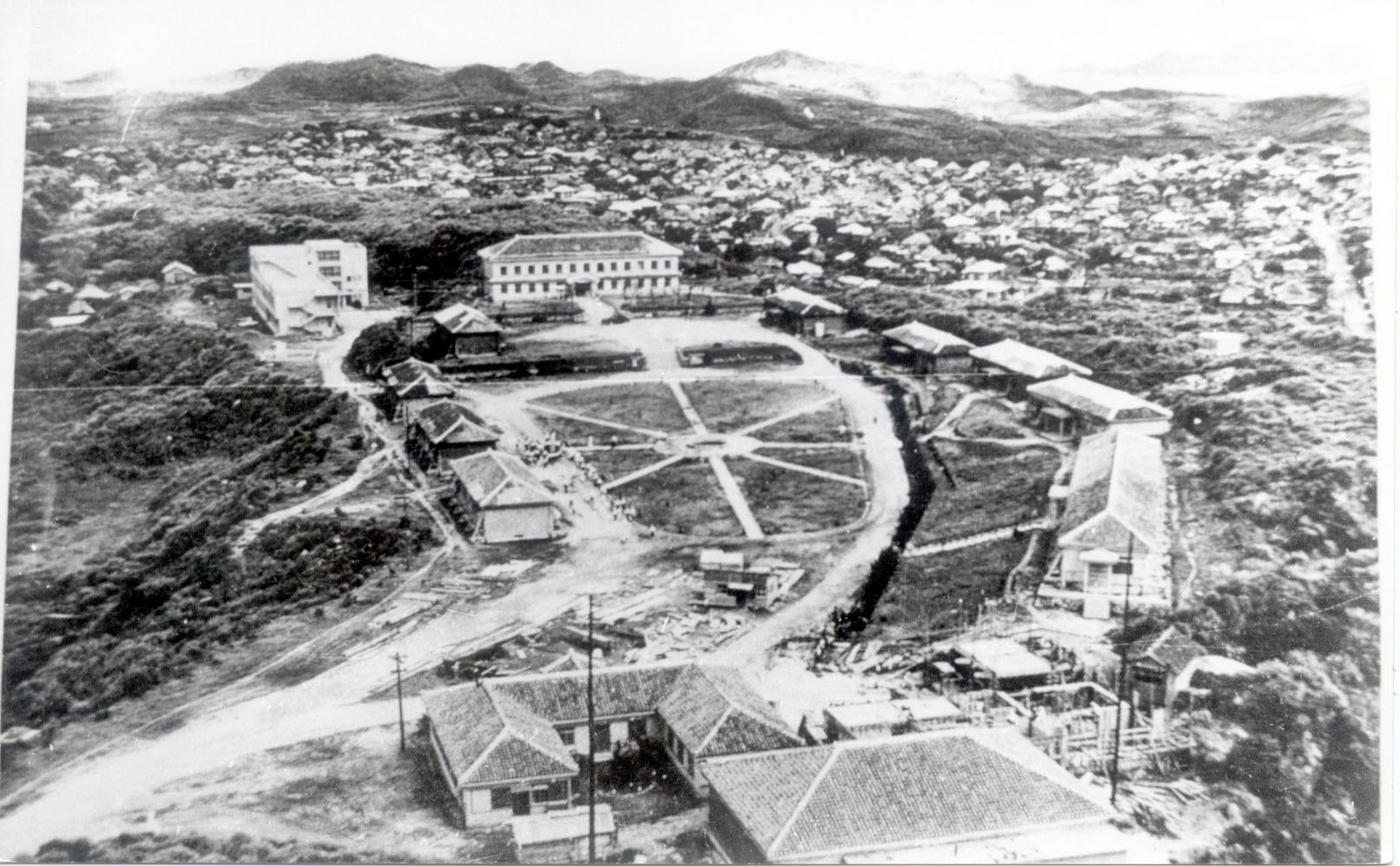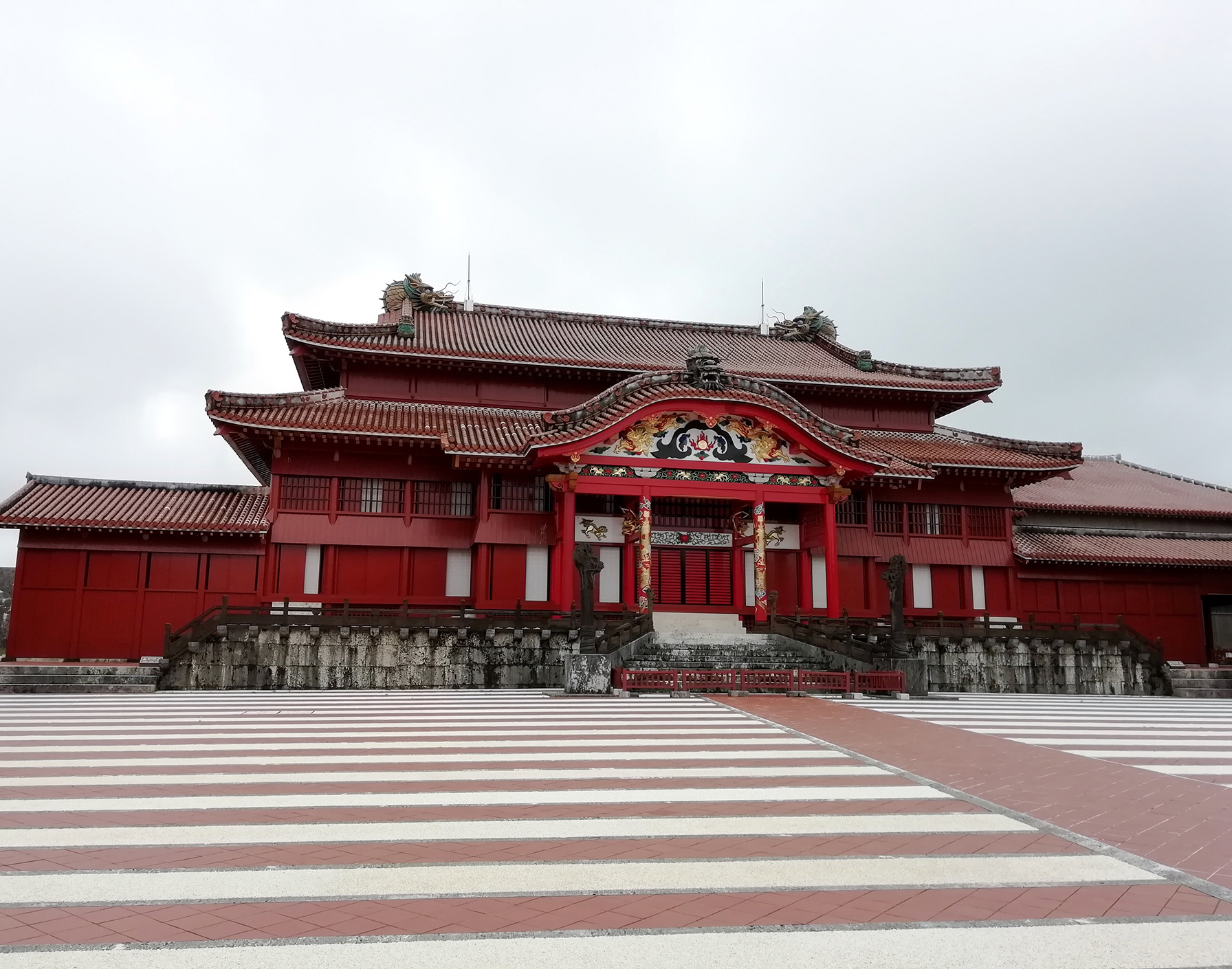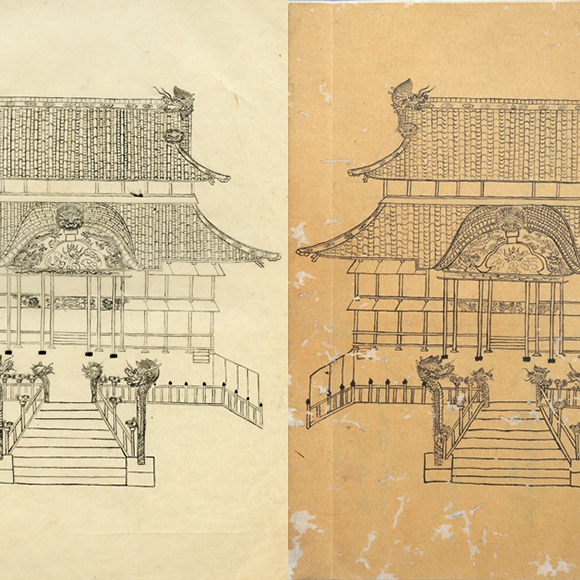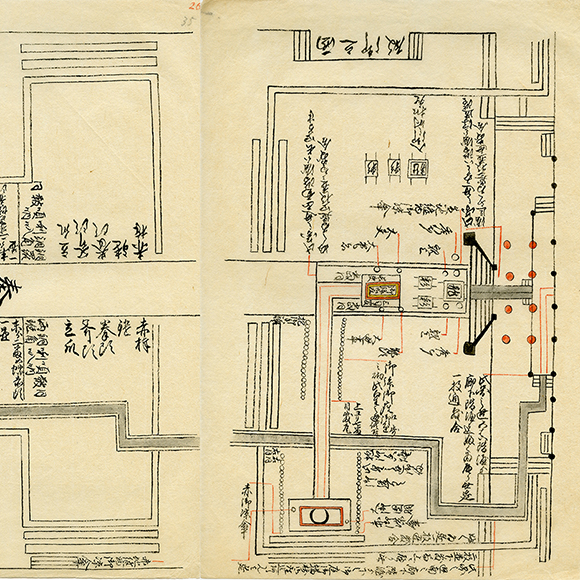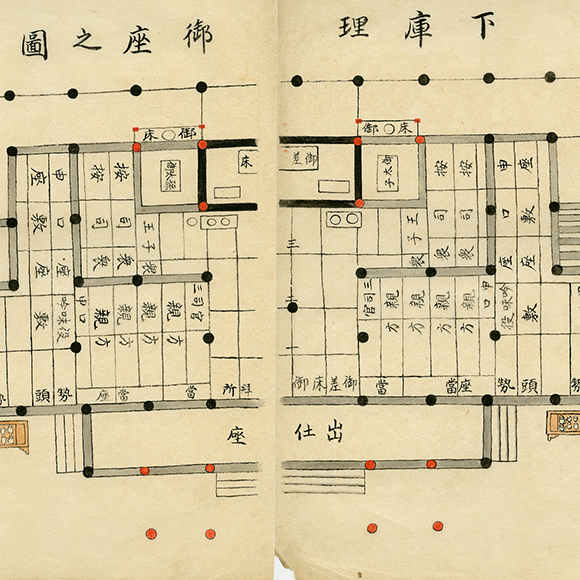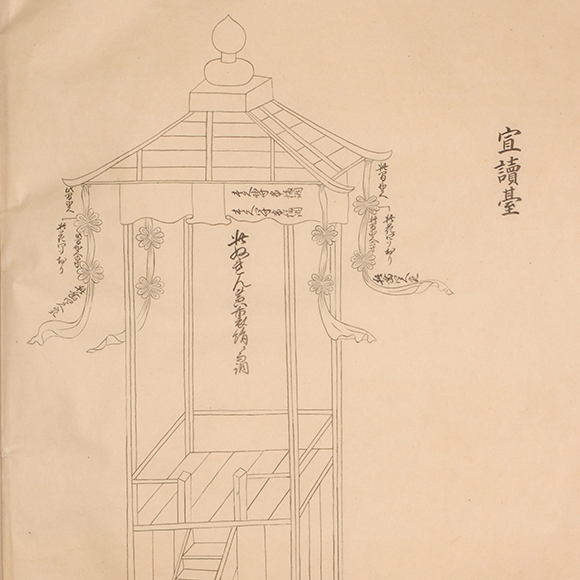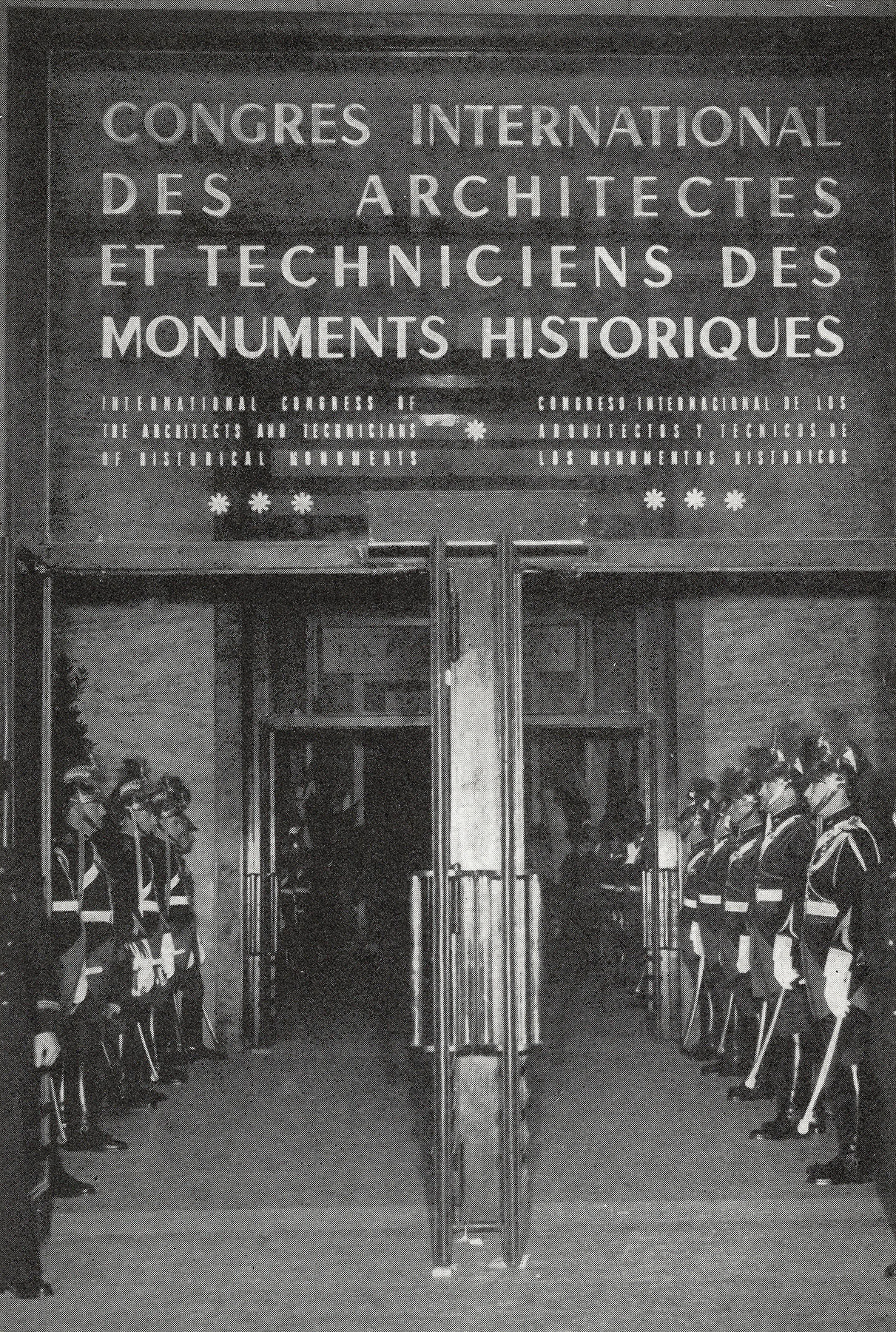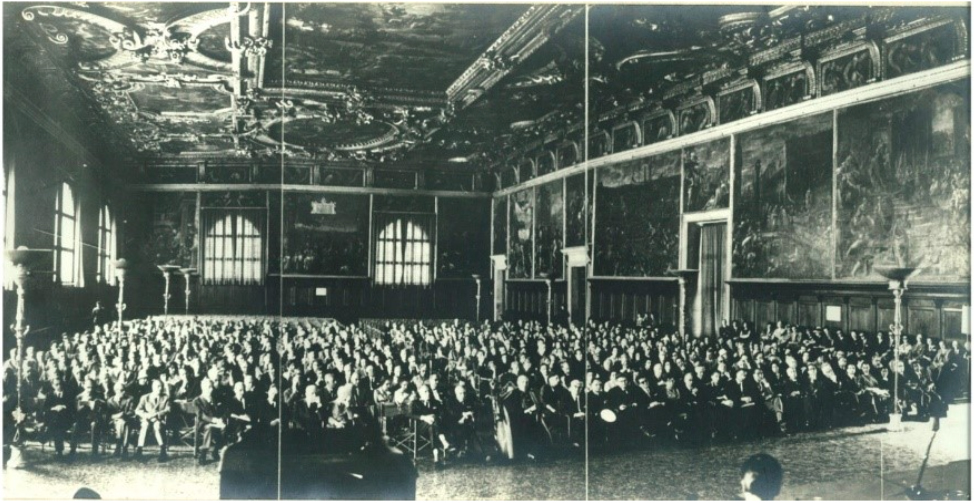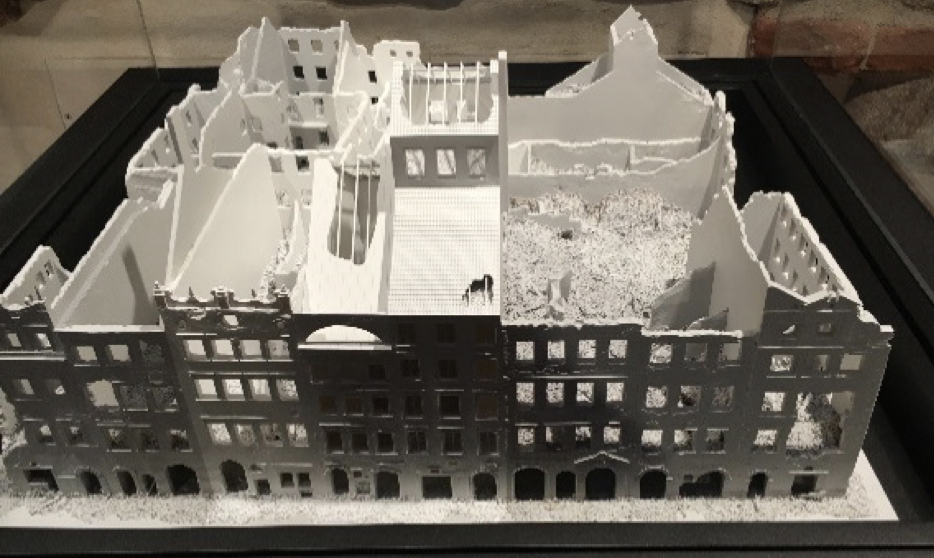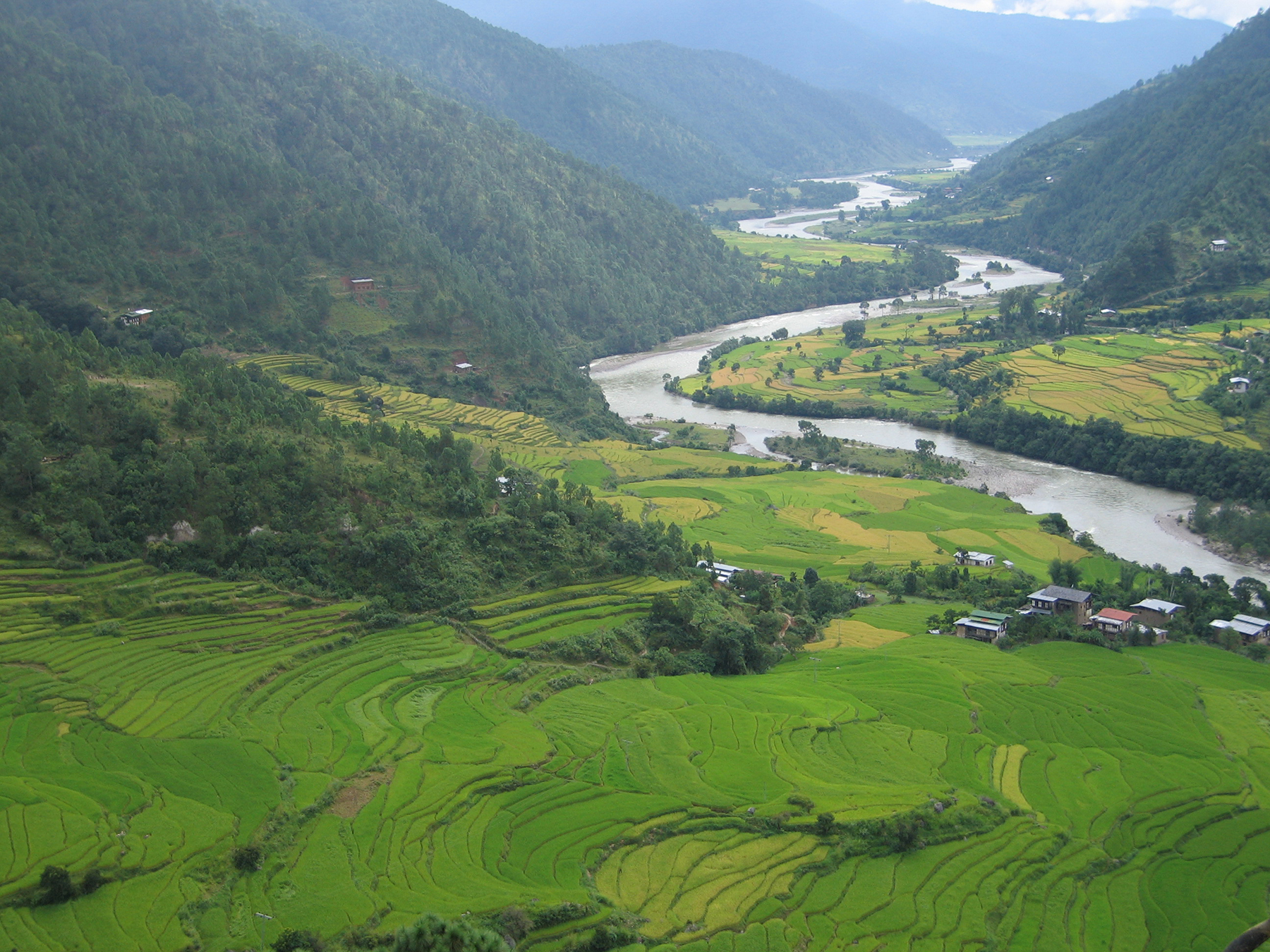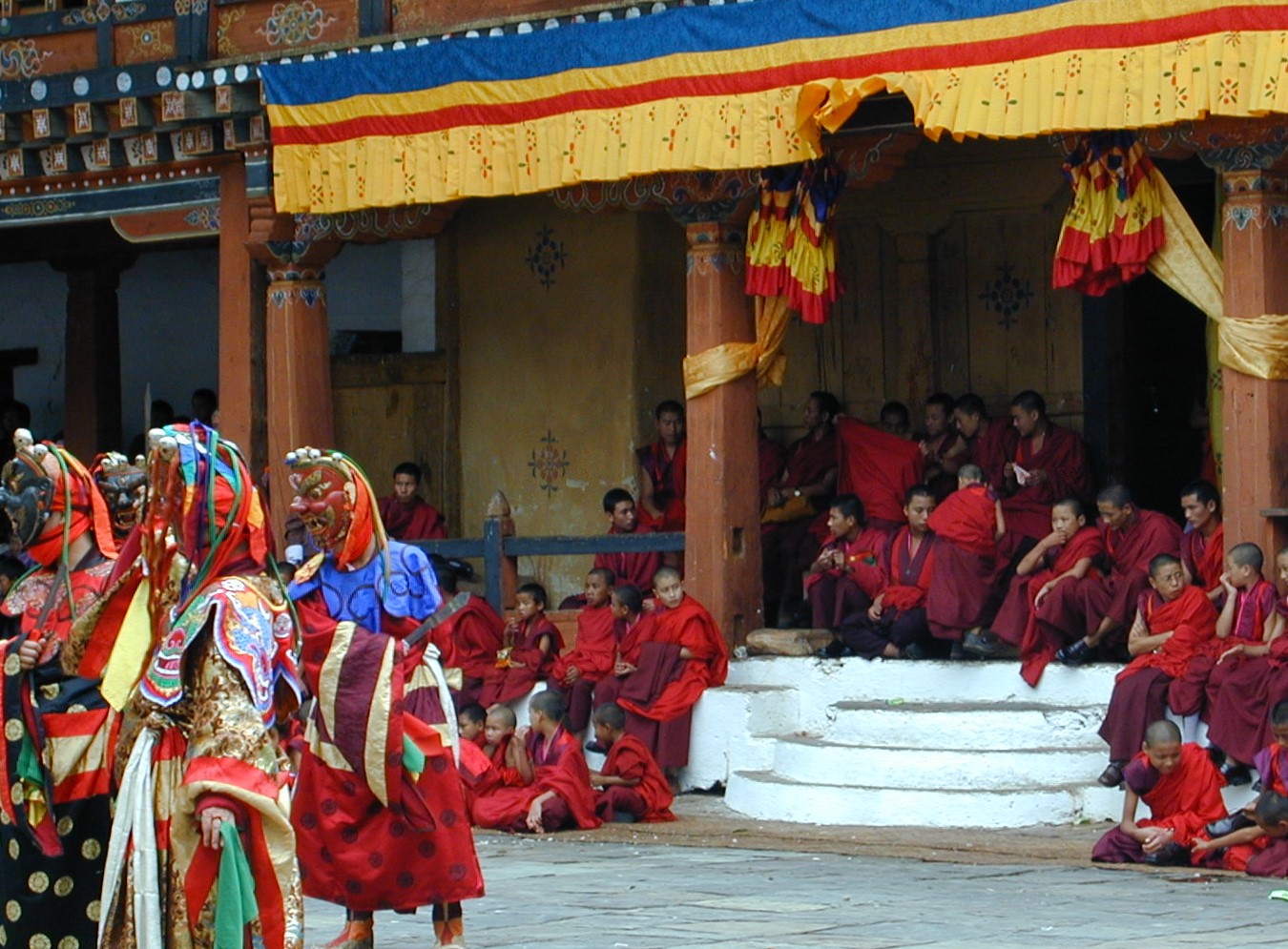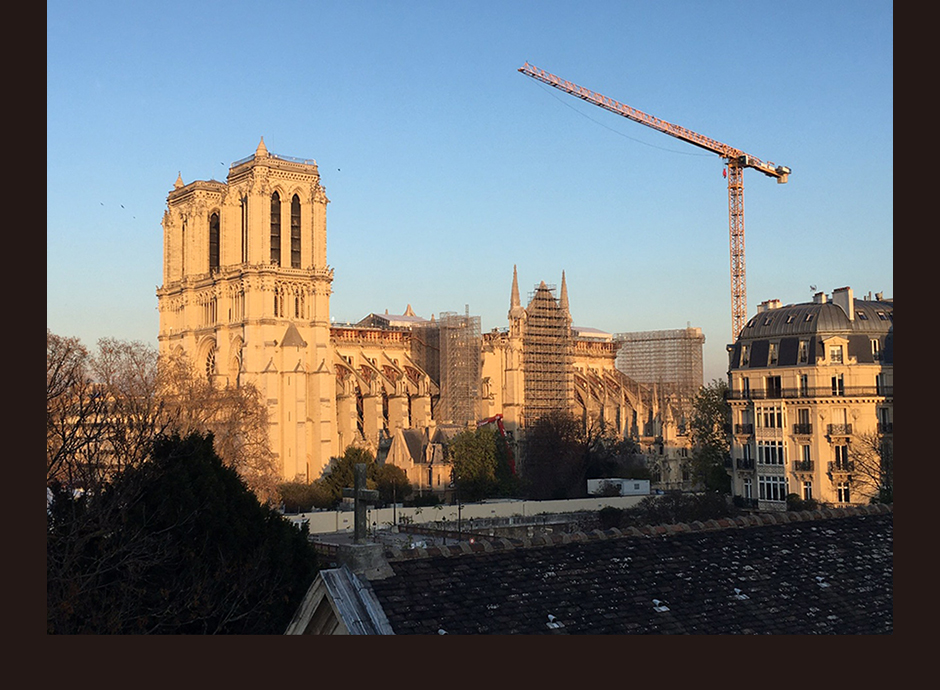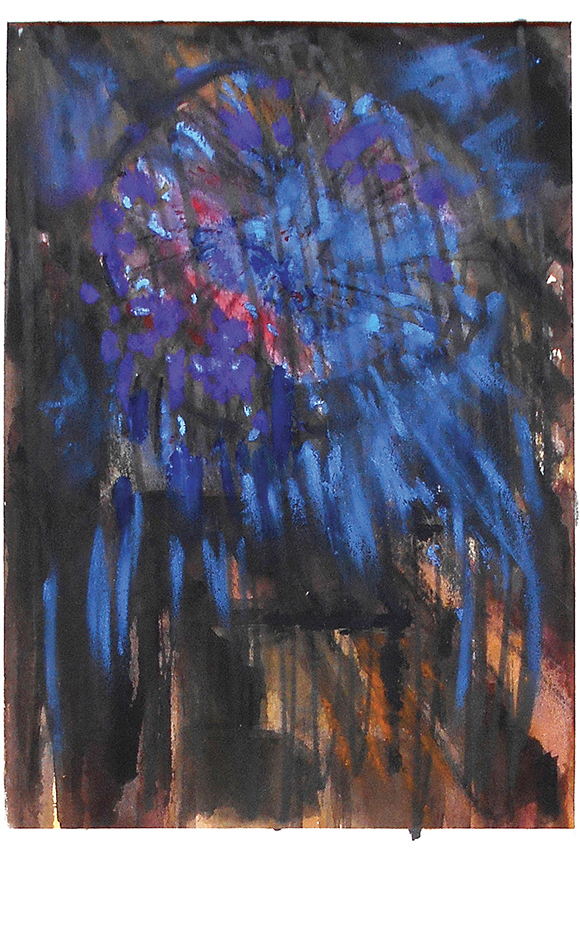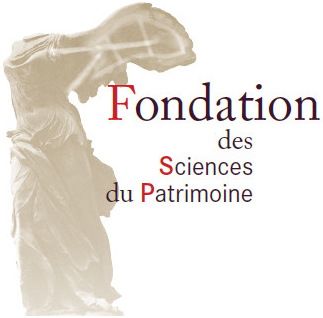In 2019, the Notre-Dame de Paris Cathedral and the Shuri-jô Castle were severely damaged by fire. This decision seems to break with the doctrines of heritage conservation based on material authenticity, However, as we will see, very rigorous analyses have been launched, |
|
|
In 2019, fire destroyed – or very heavily damaged –
these two monuments of great historical and cultural value.
As a result of the fire, and despite rescue efforts,
the heritage value was deeply affected, with irreparable losses.
|
|
||||||||||||||||||||||||||||||||||||||||||||||||||||||||||||||
On the day of the Shuri-jô fire,
Major general Jean-Claude Gallet commanding the Paris Fire Brigade sent a letter to the Naha City Fire Department.
In his message he shared his sympathies at the loss of the castle and commended the bravery
and dedication of the fire fighters.
Naha City Fire Department sent a letter of thanks in response,
expressing the department’s continued determination to confront disasters
and also sending prayers for the recovery of the Cathedral of Notre-Dame.
This is not the first time that these monuments have been damaged.
But each time, the public opinion wished their recovery.
The restorations and reconstructions undertaken have reinforced the cultural values,
which were thus added up and passed on to the following generations.
|
|

THE EVOLUTION OF HERITAGE PRACTICES AND DOCTRINES
|
And today, what did these destructions represent in the eyes of the populations?
Emotions felt and memories to be kept
|
|
|
|
The identical reconstruction is an implicit recognition of the heritage,
which engages a technical challenge mobilizing traditional and
modern knowledge and which opens the debate on authenticity.
|
|
|
|
|
Thanks to the studies, research and analyses that have reached the highest degree of knowledge, thanks to the exceptional contributions of workers, companions, architects, scientists, and public support, Notre-Dame de Paris and Shuri-jô, will overcome their deep wounds, and can hope for the rebirth of their integrity. The faithful reconstruction of the missing parts is now possible: their restoration will not be a "copy" in the sense of "falsification" of the monument, but the exact restitution of a decisive part of their authenticity. This is a major qualitative evolution in heritage conservation. To refuse it would be a profound criticism on the monuments and a culpable confiscation of the populations of the whole world who have adopted and desired it. Thus, it can be said that Notre-Dame de Paris and Shuri-jô make a significant contribution to the doctrinal evolution of heritage conservation and the major role of intangible values alongside material values. |
General Editor
|
Toshiyuki Kono |
Executive Vice-president, Distinguished Professor, Kyushu University |
Scientific Committee
|
Toshiyuki Kono |
|
|
Junko Mukai |
Architect & Cultural Heritage specialist, Former Principal Heritage Architect/ Deputy Chief Architect of Ministry of Home and Cultural Affairs, Bhutan |
|
Jean-François Lagneau |
Chief Architect of Historic Monuments, Honorary General Inspector of Historic Monuments, Former President of ICOMOS France |
|
Benjamin Mouton |
Chief Architect of Historic Monuments, Honorary General Inspector of Historic Monuments, Former Conservation Architect in charge of Notre-Dame de Paris, Former President of ICOMOS France |
|
Dany Sandron |
Professor of Art History and Archaeology of the Middle Ages of the Sorbonne University (André Chastel Center) |
|
Gaspard Salatko |
Postdoctoral fellow at the Fondation des Sciences du Patrimoine, Scientific Workshop Notre-Dame de Paris |
|
Dominique Schneider |
Former Secretary General of ICOMOS France |
|
Claudie Voisenat |
Research engineer, Héritages (CNRS, MC, CYU), Lecturer at à l’Ecole du Louvre, Scientific Workshop Notre-Dame de Paris |
Contents Creator
|
Toshiyuki Kono |
|
|
Junko Mukai |
|
|
Benjamin Mouton |
|
|
Jean-François Lagneau |
|
|
Dany Sandron |
|
|
Dominique Schneider |
|
|
Claudie Voisenat |
|
|
Gaspard Salatko |
|
|
Aurélia Azéma |
Engineer of studies, Research Laboratory of Historical Monuments (LRMH) CRC USR 3224 Scientific Workshop Notre-Dame de Paris |
|
Florence Babics |
Architect of the heritage, teacher at the school of Chaillot, former vice-president at ICOMOS France |
|
Ewan Barcelo |
Doctrant Aix-Marseille University, Institute of Mediterranean, European and Comparative Ethnology (CNRS) Scientific Workshop Notre-Dame de Paris |
|
Dorothée Chaoui-Dérieux |
Chief heritage curator, DRAC Ile-de-France regional service in archaeology, ArScAn UMR 7041 Scientific Workshop Notre-Dame de Paris |
|
Isabelle Chave |
Deputy Director of Historic Monuments and Heritage Sites, Service in the Heritage. General Directorate of Heritage and Architecture (the Ministry of Culture) |
|
Véronique Dassié |
CNRS researcher, Héritages UMR 9022 (CYU, CNRS, MC) Scientific Workshop Notre-Dame de Paris |
|
Clara Delettre |
Student at the Ecole du Louvre, laboratory of Scientific Workshop Notre-Dame de Paris |
|
Nocolas Fiquet |
Master student - Ecole du Louvre « Arts Literatures Langages » (EHSS) |
|
Clément Gaesler |
Graduate of the Ecole du Louvre, Scientific Workshop Notre-Dame de Paris |
|
Dorian Haudoin |
Student at the Ecole du Louvre, laboratory of Scientific Workshop Notre-Dame de Paris |
|
Maxime L’Héritier |
Lecturer at University Paris 8, ArScAn UMR7041 |
|
Brian FG Katz |
Director of Research CNRS – Sorbonne University, Institute d’Alembert, Scientific Workshop Notre-Dame de Paris |
|
Claudie Loisel |
Research Engineer in charge of the Stained-Glass Section of the Historic Monuments Research Laboratory (LRMH), Scientific Workshop Notre-Dame de Paris |
|
Martine Monferran |
Research fellow - Héritages (CNRS, MC, CYU), Scientific Workshop Notre-Dame de Paris |
|
Yann Potin |
Charge of documentary studies - National Archives. Associate Professor in History of Law, University of Paris-Nord, Scientific Workshop Notre-Dame de Paris |
|
Vianney Rochet |
Student at the Ecole du Louvre, laboratory of Scientific Workshop Notre-Dame de Paris |
|
Sylvie Sagnes |
CNRS researcher Héritages UMR 9022 (CYU, CNRS, MC) |
|
Delphine Syvilay |
Research Laboratory for Historical Monuments (LRMH), Scientific Workshop Notre-Dame de Paris |
|
Jonathan Truillet |
Deputy Director of Operations of the Public Institution in charge of the Conservation and Restoration of the Notre-Dame Cathedral in Paris |
|
Jun Zhang |
Master student, Heritage and Museums (University Paris I), Scientific Workshop Notre-Dame de Paris |
|
Trevor H.J. Marchand |
Professor, SOAS |
|
Loughlin Kealy |
Emeritus Professor of Architecture, University College Dublin |
|
Solène Hazouard |
Scientific manager - Héritages (CNRS, MC, CYU). |
Web Producer
|
Akemi Kimura |
|
This exhibition was made possible through the financial support of the Japan Society for the Promotion of Science (JSPS)
"Topic-Setting Program to Advance Cutting-Edge Humanities and Social Sciences Research"
and Kyushu University.
BIBLIOGRAPHY |
|
| [Notre-Dame de Paris] | |
| 01. | Eugène Viollet-le-Duc, Dictionnaire de l'architecture française du XIe au XVIe siècle. Paris, Bance et Morel, 1854-1868; reprinted by De Nobele Paris, 1967; |
| 02. | Victor Hugo, Notre-Dame de Paris, 2nd edition Renduel éditeur 1832; |
| 03. | ICOMOS, International Charters on Conservation and Restoration, 2nd edition 2004; |
| 04. | Notre-Dame de Paris, collective work, publisher La Nuée Bleue/DNA, Strasbourg 2012; |
| 05. | Sandron Dany, Tallon Andrew, Notre-Dame de Paris, neuf siècles d'histoire, Paris, Parigramme, 2013, reed. 2019; english edition: Notre Dame Cathedral. Nine Centuries of History, University Park, Pennsylvania, The Pennsylvania State University Press, 2020; |
| 06. | Sandron Dany, Notre-Dame de Paris. Histoire et archéologie d'une cathédrale (XIIe-XIVe siècle), Paris, CNRS Editions, 2021. |
| 07. | Magazine des pompiers de Paris Allo dix-huit, special issue May-June 2019 https://allo18-lemag.fr/histoire-il-y-a-un-an-notre-dame-de-paris/ |
| 08. | Site of the Ministry of Culture on the Notre-Dame de Paris construction site https://notre-dame-de-paris.culture.gouv.fr/notre-dame-de-paris/fr |
| 09. | Mathieu Lours, Églises en ruine. Des invasions barbares à l'incendie de Notre-Dame, Paris, Cerf, 2020. |
| 10. | Gubert Romain, La nuit de Notre-Dame par ceux qui l'ont sauvé, Paris, Grasset, 2019. |
| 11. | Reveyron Nicolas, Notre-Dame de Paris. What future for our past ? Paris, Cerf. |
| 12. | Daniel Fabre (ed.), Émotions patrimoniales, Paris, Éditions de la Maison des sciences de l'homme, coll. " Ethnologie de la France ", cahier n° 27, 2013 |
| [Shuri-jô] | |
| Shuri-jô Research No.1-23" Shuri-jô Research Association, Friends of Shuri-jô Park, 1994-2021 | |
| 02. | Reconstruction of Shuri-jô Castle: Focusing on the Concept and Basis of Reconstruction of the Main Hall", Ocean Expo Memorial Park Management Foundation, March 2003. |
| 03. | Record of Planning and Design of Shuri-jô District, Okinawa Memorial Park, Okinawa Development Authority, Okinawa General Bureau, Okinawa Memorial Park Office, March 1995. |
| 04. | Reviving Shuri Castle: History and Reconstruction, Shuri Castle Reconstruction Association, March 1993. |
| 05. | Introduction to Shuri Castle" Shuri Castle Research Group, August 1989 |
| 06. | Shuri-jô Seiden Area Excavation Report, Okinawa Prefectural Archaeological Center, March 2016. |
| 07. | Treasures of Okinawan Culture, Kamakura Yoshitaro, Iwanami Shoten, October 1982. |
| 08. | Ryukyu Ships and Shuri/Naha: A Study of Paintings" Shibunkaku Publishing, February 2019 |
| 09. | Gusuku, Community, Village" ASATO Susumu, Solju Shorin, December 1998 |
| 10. | Introduction to Archaeology of the Southern Islands" Okinawa Archaeological Society, Border Ink, April 2018 |
| 11. | Ryukyu/Okinawa History" SHINJÔ Toshiaki, Editorial Studio Toyo Keikaku, June 2014 |
| 12. | "The Slope to Shuri Castle" Yonabaru Megumi Chuokoron Shinsha, November 2016 |
| 13. | The Man Who Saved Shuri Castle" NONOMURA Takao, Niraisha, October 1999 |
| 14. | Bessatsu Taiyo Shuri-jô " Heibonsha, December 2020 |
| 15. | Okinawa Prefecture Government Official Website https://www.pref.okinawa.jp/index.html |
| 16. | Shuri-jô park homepage https://oki-park.jp/shurijo/ |
LIST of PHOTO CREDITS |
| in order of appearance on screen |
| [Notre-Dame de Paris] |
| © Benjamin Mouton , Dany Sandron, Emmanuel Fournier, Phiilippe Villeneuve, Entreprise le Bras, Entreprise Jarnias, C2RMN, Etablissement public chargé de la conservation et de la restauration de la cathédrale Notre-Dame de Paris, Médiathèque de l’architecture et du patrimoine(MAP), CNRS/Ministère de la culture, Le Parisien, Jean-Christophe Monferran, Pompiers de Paris, Gregory Chaumel, Plemo3D, Christian Lemzaouda, Centre André Chastel, Seb !Godefroy, Musée du Louvre, RMN, BnF, Google, Collections particulières, Académie de Paris, Journal Excelsior (1918), Vincent Mathieu, Bazard Jean-Pierre, Creative Commons, Véronique Dassié, Universal Pictures, Comédie musicale Notre-Dame de Paris, Gisserot Editions, Dunston Thomas Evans, Association CASA, Mayanming, Plantu by courtesy of the author, Musée du Louvre, collection Rotschild, Musée des Monuments français, UNESCO, Aline Magnien, LRMH, Oscar Ortega by courtesy of the author, Marind, Creative Commons, Ministère de la Culture/ Ferrante Ferranti, Alexis Komenda, Cyril Fressillons CEA, Musée de l’œuvre Notre-Dame de Strasbourg, Andrew Tallon, Rémi Fromont, Cédric Tenteseaux, Ecole de Chaillot, Compagnons du devoir, Viollet-le-Duc, Pascal Lemaître, Pascal Prunet, François Calame, Agathe de Maupeou, Blaise Monferran, Charpentiers sans frontières, François Auger, Guillaume Boué, David Moreno, Florence Babics, Jean-Louis Arnaudin, Peter Stitt & Brian FG Katz, Christian Dury, Bart Postma, Wikimedia Commons, Frédéric Deschamps, Dominique Bouchardon, LRMH, Vassil, Alexandre François, Eduard Gaertner, Archives nationales, Archives de la ville de Paris, Centre des Monuments nationaux, Violette Abergel, Chantier Scientifique Notre-Dame de Paris, Visibrain, Cathédrale Notre-Dame de Paris, AFP, Claudie Voisenat, Diocèse de Paris, Oli – Sudpresse (Belgique), Emmanuel Chaunu, Romain Genty, Jean-Marc Dal, Didier Durand, Gaspard Salatko, Fondation des Sciences du Patrimoine, Michel Pourny, Cyril Fresillon / IRAMAT / NIMBE / ArScAn / CEA, Marie-Hélène Didier, DRAC IDF, L’Est Républicain, Bart Postma, Brian FG Katz, Bruno Sellier, Spectaculaires, Allumeurs D’images – Création, Jean-Marc Charles, Ewcia2331, Gary Todd, Henri Chalet 2020, Maîtrise Notre-Dame de Paris, Philipe Rochot, Frédéric Deschamps/ Wikimedia Commons/ Domaine public/ octobre 2006, Myrabilla, Léonard de Serres, Cristina Correa Freile, REUTERS/ Philippe Wojazer, Bouet, Bernard Duvert. |
| [Shuri-jô] |
| Okinawa Prefectural Museum and Art Museum / Naha City Museum of History / National Okinawa Memorial Park Office, Okinawa General Bureau, Cabinet Office / Junko Mukai / The Okinawa Times / The Ryukyu Shimpo / Okinawa Prefectural Library / Okinawa Prefectural Archives / Okinawa Prefectural Archaeological Center / Agency for Cultural Affairs / University Library and Arts Museum, Okinawa Prefectural University of Arts / Suguru Kinjo |
